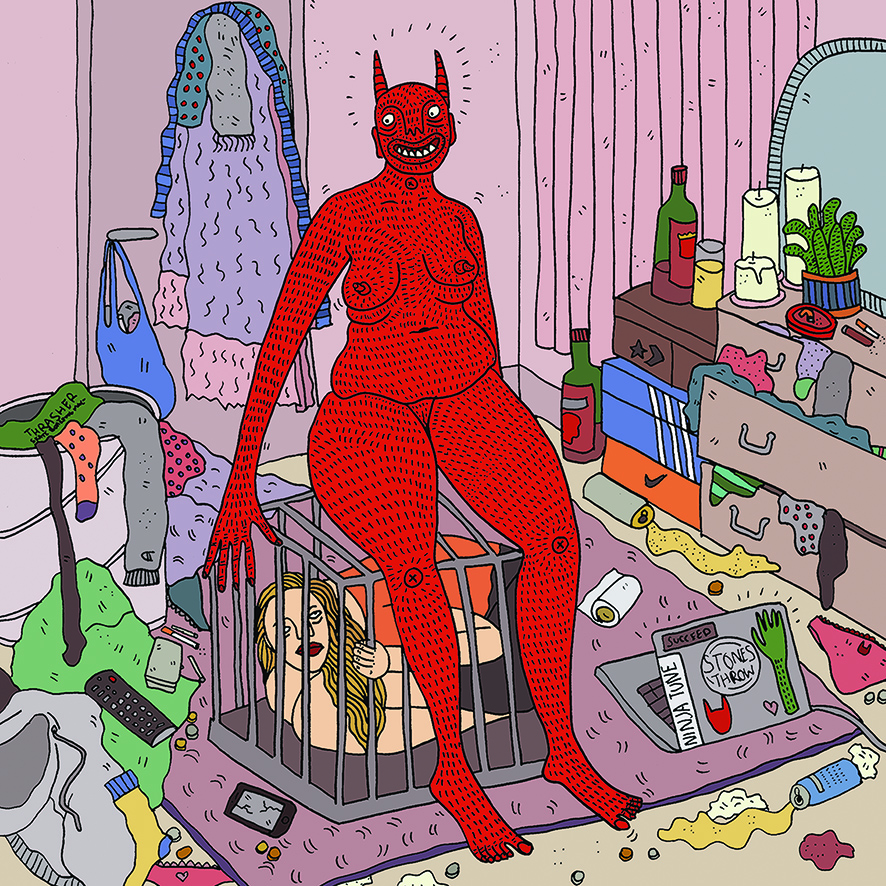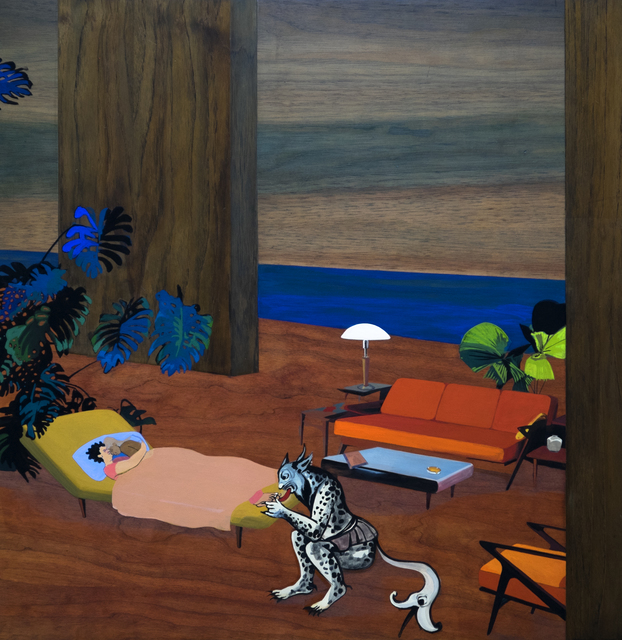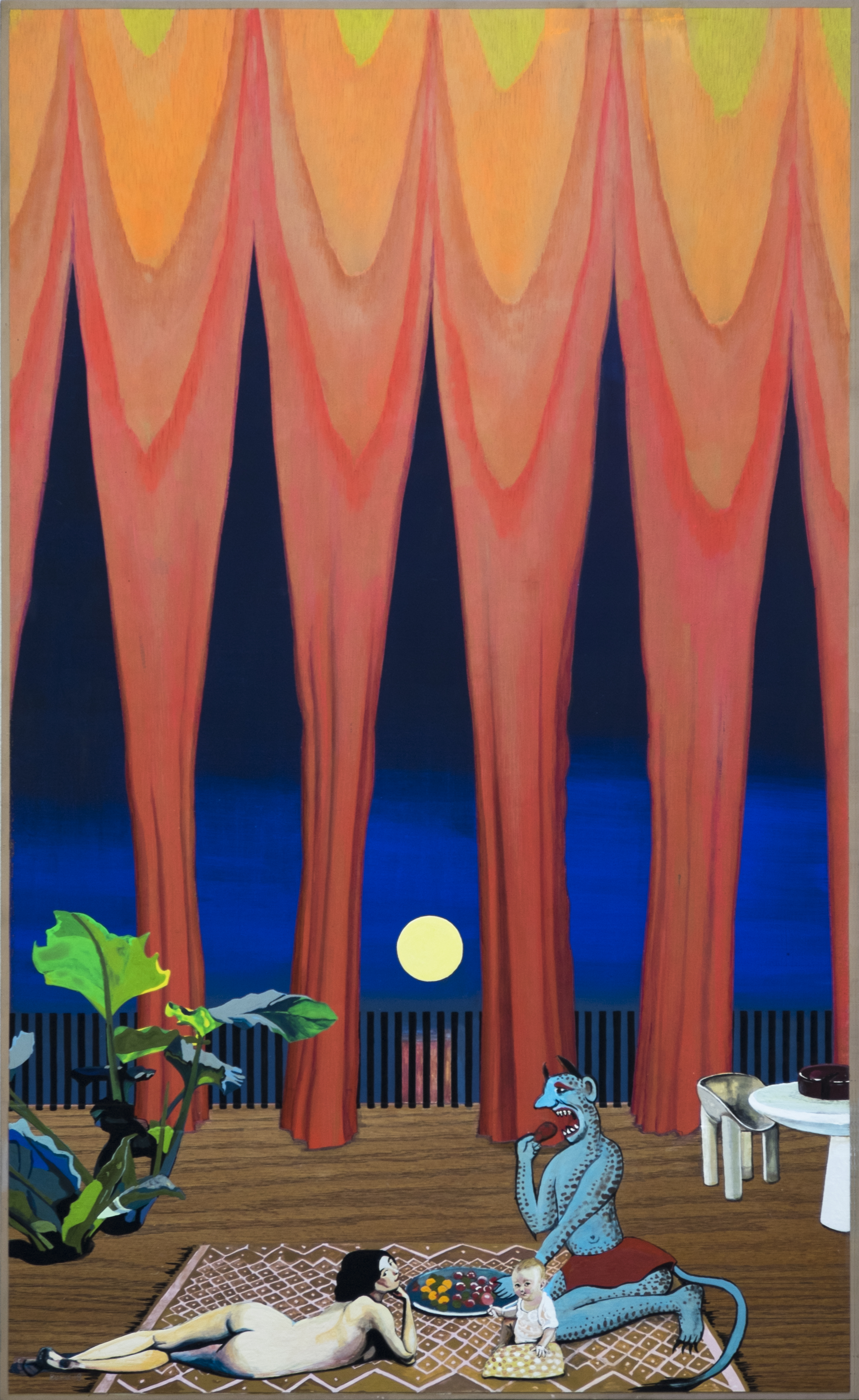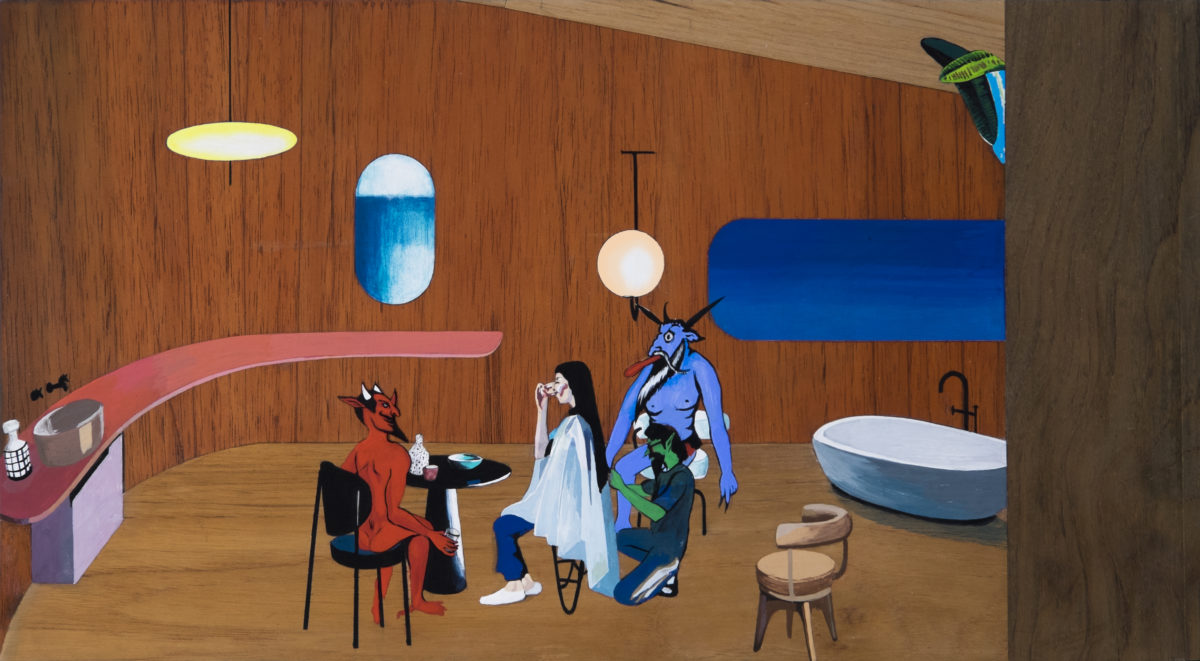
There are many examples of demons brought to life in art, from Michelangelo’s shadowy spirits in The Last Judgment to Fuseli’s gargoyle-like creature in The Nightmare. However, while demons were once predominantly terrifying external forces that possessed their human prey, we are starting to see more nuanced and empowering depictions of the way we experience darkness in the mind. As society is becoming more psychologically savvy and ultimately less afraid of mental health, people are learning to sit with their demons and even welcome them in, because in doing so the demons lose their destructive power.
Artist Polly Nor’s hand-drawn illustrations of demons are more mischievous than monstrous with their bright eyes and wide grins. The devil-like creatures have become so iconic that many of Nor’s one million Instagram followers are rushing to sport them on their phone cases, T-shirts and even their own skin. “We are used to this depiction of the devil as an enemy, a threat to female innocence and purity,” says Nor. “Although I sometimes poke at these tropes satirically, I like to steer away from the whole innocent vs evil, good vs bad thing in my work. My female characters are not innately ‘innocent’’ and the demons aren’t innately ‘evil’.”

The relationship between her characters and their demons varies. In some instances, the demons get the better of Nor’s subjects, creeping up on them as they sleep, drowning them or emerging from theirs vaginas covered in blood. At other times, they are at peace, embracing or grooming each other. Often, the demon emerges from inside the woman, peeling off its human appearance like a bodysuit.
Nor says she has used the demons to symbolise lovers, toxic relationships, capitalism and politicians. Because the devil’s role in her art is so changeable, she finds it hard to talk about them in a general way. If there is a common thread, it’s that the demons represent the emotional state of her characters. “They are often a representation of her frustrations, anxieties, insecurities and desires,” Nor explains. Her devilish creatures are not separate from her subjects but live within them, and far from being inherently bad, they are part of what make us human.
“Mindfulness teaches us that instead of fearing our demons and resisting them, we need to approach them with acceptance and compassion”
But we are still ashamed of our darker sides. We only get to see Nor’s demons in domestic, private settings. The women are most often in their bedrooms or bathrooms and almost always alone. “I like to focus on the parts of the human experience that we tend to hide from social media,” Nor explains. “I like to explore the chaos and dysfunction behind the contrived narratives we paint of our ideal selves.”
Artist Hulda Guzman is also interested in the elements of ourselves that we try to repress. Her Be Kind to Your Demons series is influenced by psychoanalyst Carl Jung, who claims that we all have a “shadow” self. This is the part of our personality that we are not conscious of or do not identify with. It is usually an aspect of us that was rejected by someone else when we were very young, and as a result we have grown up to reject it ourselves.
- Hulda Guzman, A Haircut, 2018
“The shadow is made up of the thoughts, emotions and impulses that we find too painful, embarrassing or distasteful to accept,” says Guzman. “So instead of dealing with them, we repress them.” The problem is that we can’t vanquish our shadow. In fact, trying to do so only increases its power over us. “The more we try to repress those society-determined undesirable qualities, the more they find interesting and often mischievous ways to express themselves,” says Guzman.
As Nor illustrates, whether we fight our demons or run away from them, they will keep coming back. For example, in one post titled Learned How to Hide My Crazy, But It Got Loose, a woman has successfully trapped her demon in a cage. But her plan backfires: in the next image she is in the cage herself, and the fiend is sitting triumphantly on top. “I’ve found that repressing or running away from unresolved traumas or unpleasant emotions has never made them go away,” says Nor. “They’ve just reappeared in different forms later down the line.”
“Nor’s devilish creatures are not separate from her subjects but live within them, and far from being inherently bad, they are part of what makes us human”
Mindfulness teaches us that instead of fearing our demons and resisting them, we need to approach them with acceptance and compassion. In Be Kind to Your Demons, Guzman shows women not only accepting the presence of their shadow selves, but sharing their food, wine and sex lives with them. Far from threatening, the creatures have a chic, otherworldly air and seem to enjoy indulging in their opulent surroundings.
Through these “moments of conciliation” with whatever torments us, Guzman believes we can discover a more secure sense of who we are. “The shadow is the doorway to the self,” she says. “In embracing our totality, we experience freedom. By embracing our darkness, we find our light. The soul is a place of ambiguity, contradiction and paradox.” So, like Nor’s characters, we are neither innately dark or light but contain both forces within us, with each feeding into the other.

This tension brings with it a creative energy. “The shadow contains not only destructive aspects of the personality, but also powerful and potent creative abilities,” says Guzman. “The part that we are ashamed of actually comes bearing gifts.” For Nor, drawing her uncomfortable feelings, stress and emotions releases her from their grip. If we can learn to be a bit more hospitable, our demons will become more gracious and even delightful guests.
As the poet Rumi (another of Guzman’s influences) writes: “This being human is a guest house, every morning a new arrival, a joy, a depression, a meanness, some momentary awareness comes as an unexpected visitor. Welcome and entertain them all, even if they are a crowd of sorrows that violently sweep your house empty of its furniture. Still treat each guest honorably. He may be clearing you out for some new delight. The dark thought, the shade, the malice, meet them at the door laughing and invite them in. Be grateful for whoever comes, because each has been sent as a guide from beyond.”






